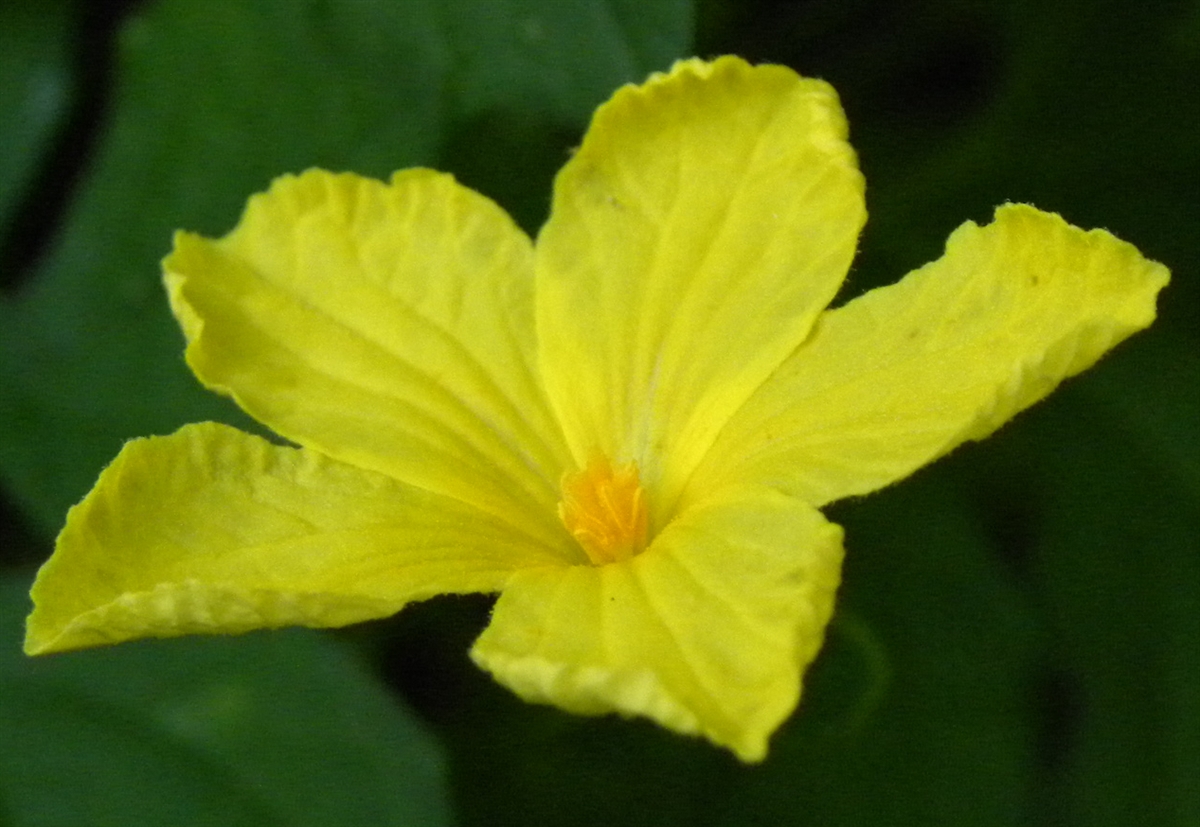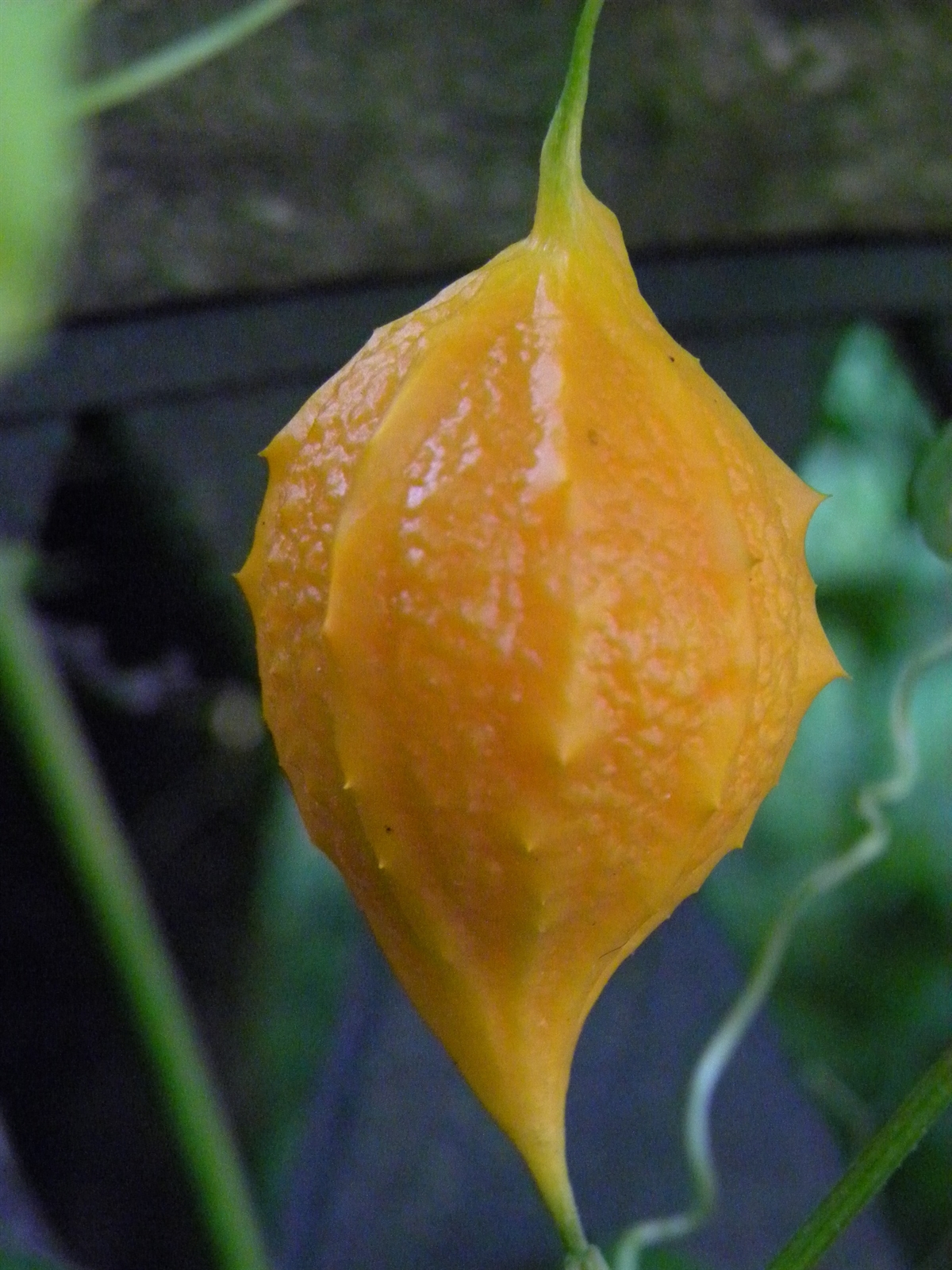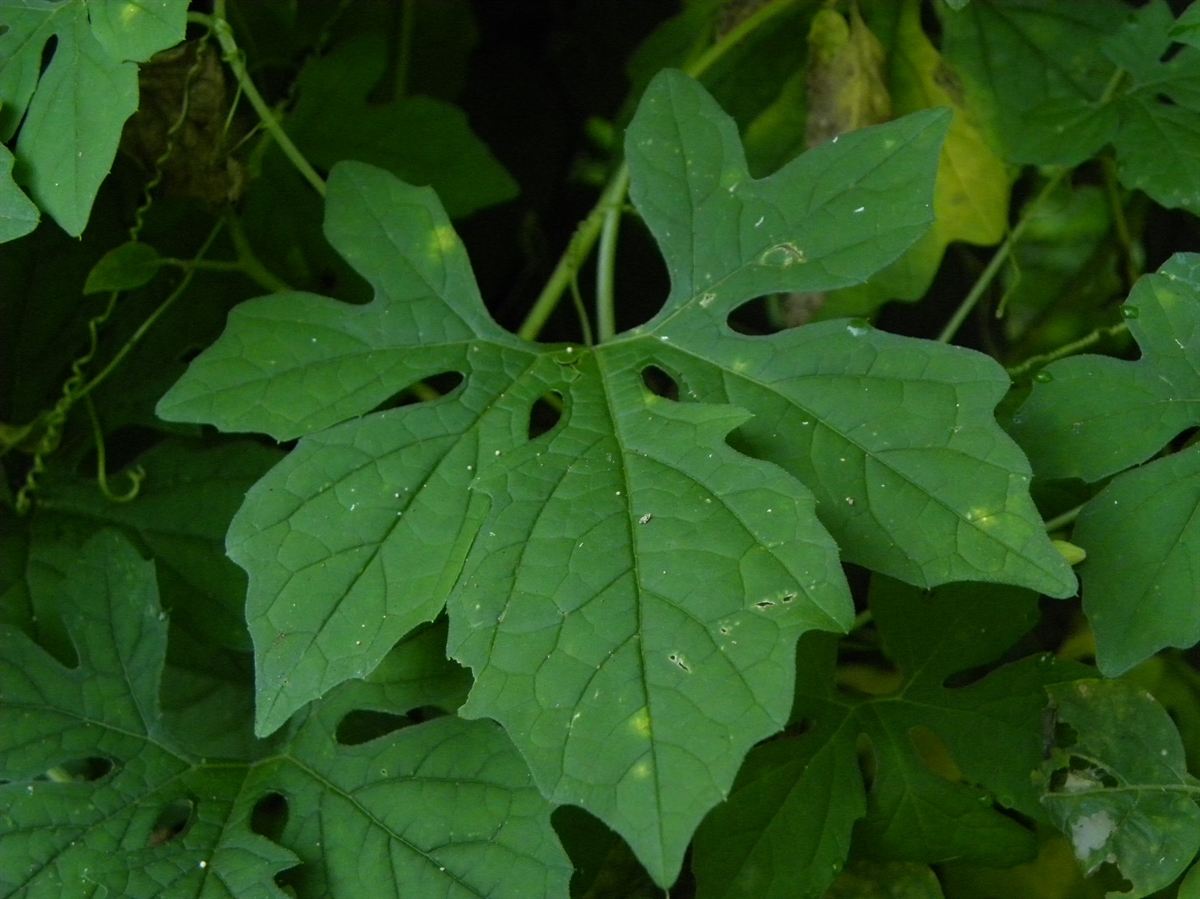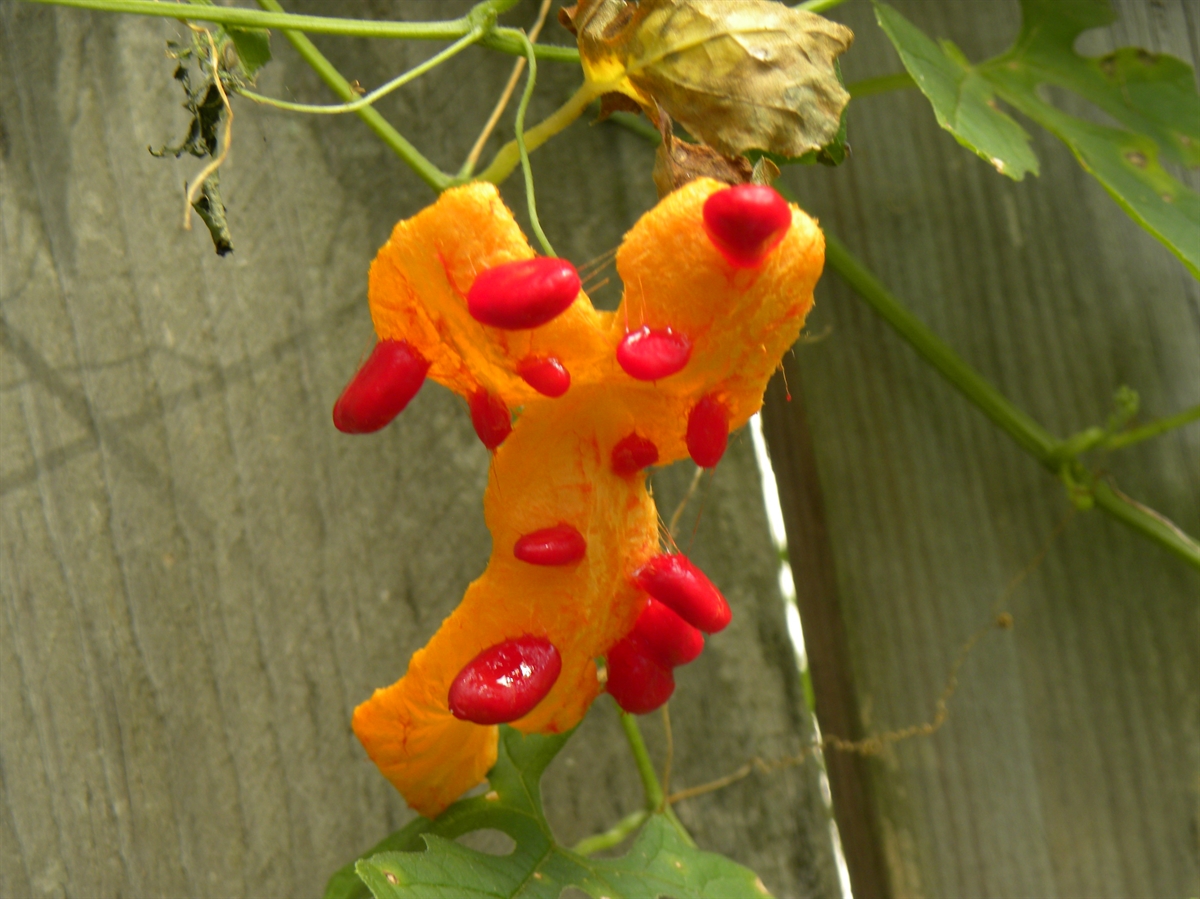Habit: Momordica charantia grows as an annual vine up climbing on fences and other vegetation through tendrils from leaf axils. The leaves are arranged alternately, reniform in shape with lobes, to 6 cm in length and 12 cm wide, with an entire margin, lobes with a rounded to acute apex.
The incomplete, imperfect, actinomorphic, flowers are arranged solitarily in leaf axils. The calyx has 5 fused green sepals. The corolla has 5 unfused, yellow petals. In staminate flowers there are 3 stamens, 2 staminodes and no carpel. In carpellate flowers there are two staminodes but no stamens and an inferior ovary with a single locule and many seeds. The fruit is an orange berry at maturity with red seeds.
Habitat: Momordica charantia grows in Human Altered environments (old fields, yards, roadsides, fence lines).
Distribution: Momordica charantia is NOT native to the Lucayan Archipelago. It is native to Africa and Asia but has spread throughout tropical and subtropical Western Hemisphere.
Medicinal/Cultural/Economic usage: Momordica charantia has been used in the Lucayan Archipelago to treat colds and flus, obstetric and gynecological issues, gastrointestinal problems, and in strengthening teas.



